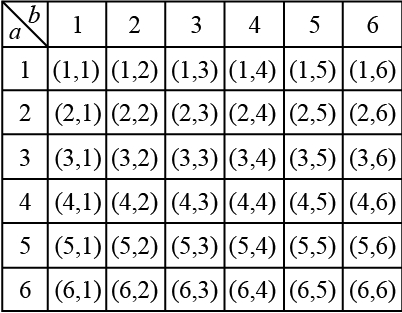答案:C
解析:
The outcome space for this experiment is the set of all ordered pairs (a,b) where a represents the first number that comes up, and b represents the second one. Since a and b can take all the values 1 through 6, there will be a total of 36 possible outcomes. The outcomes can be represented in a table as shown:

Among all the pairs (a,b), 6 are pairs for which a = b.So 30 remaining pairs will have a!=b. Notice that the number of pairs (a,b) for which a<b is the same with the number of pairs
(a , b) for which a greater than b. Therefore the number of pairs
(a , b) for which a less than b, is 15(half of 30). Then the probability that a less than b is equal to (number of pairs (a , b) comma where a less than b) over (number of all possible outcomes) = 15 over 36 = 5 over 12.












